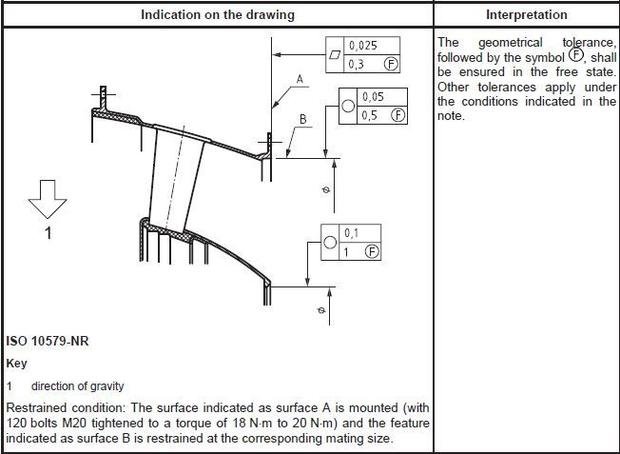I have been having an animated discussion with the design engineers this morning as to why I think there drawings is wrong. The design engineer is sat there with the standard which is ISO 8888 and is adamant that he is correct and he can dimension the feature like this and use whatever tolerances he likes in whatever order.
That is the offending tolerance, A,B & C are the overall datums for the whole part and I have no problems with that segment. The lower segment however to me is wrong in so many ways, maybe I am wrong as I am someone who is actually trained in ASME and not ISO, maybe he is right and it can be done like this in ISO,
He claims the F in the circle means measure in free state however ive never seen it placed where it is now. I also believe from my ASME training that the bottom segment refines the top segment so cannot use different datums, and I think this is the same for ISO.
I would usually argue my case louder but this is the senior design engineer here and he is digging his heels in at the moment and not changing the drawing, plus I don't want to look like an idiot if he is right and can tolerance the feature like this.
Anyone have any thoughts?

